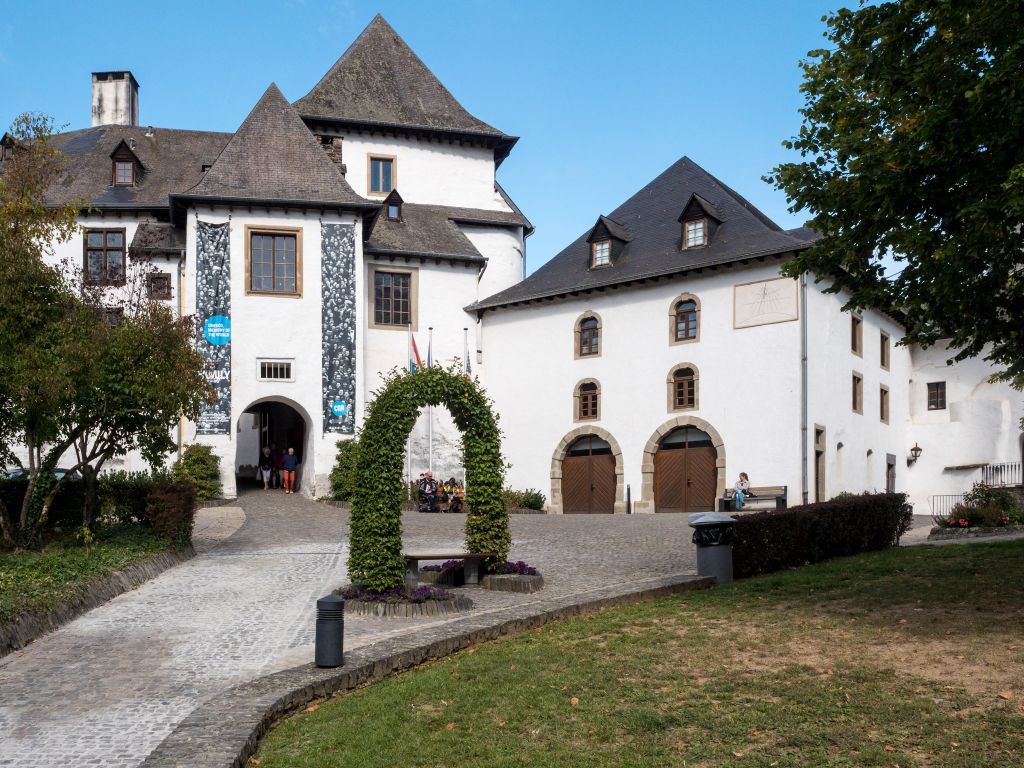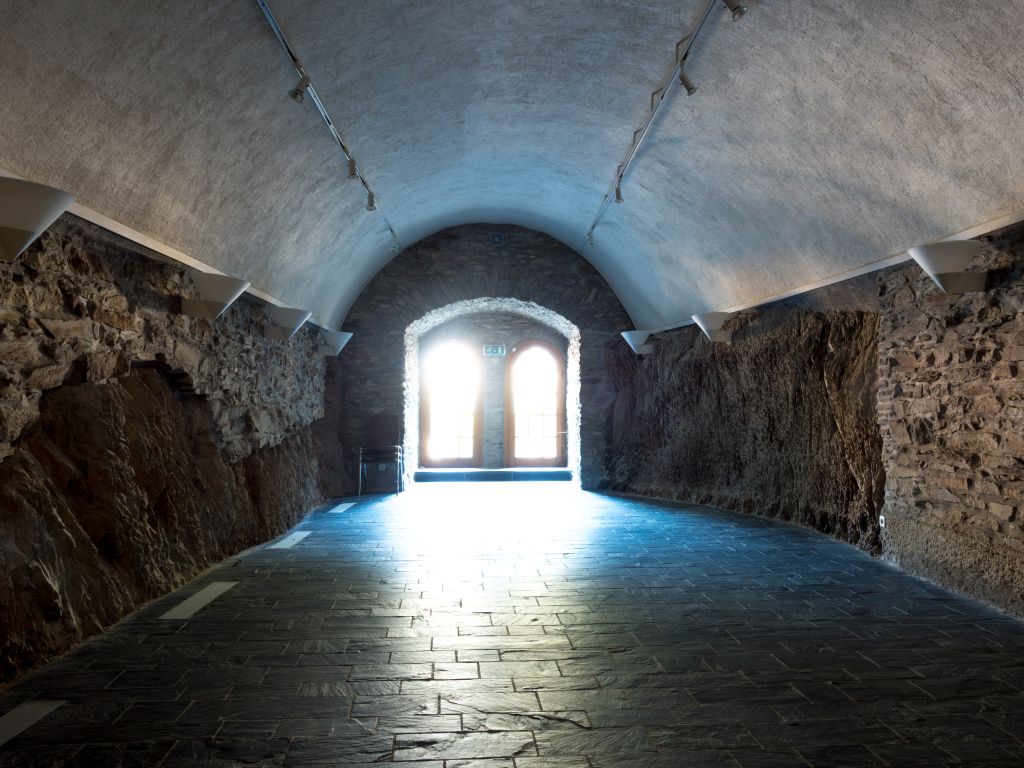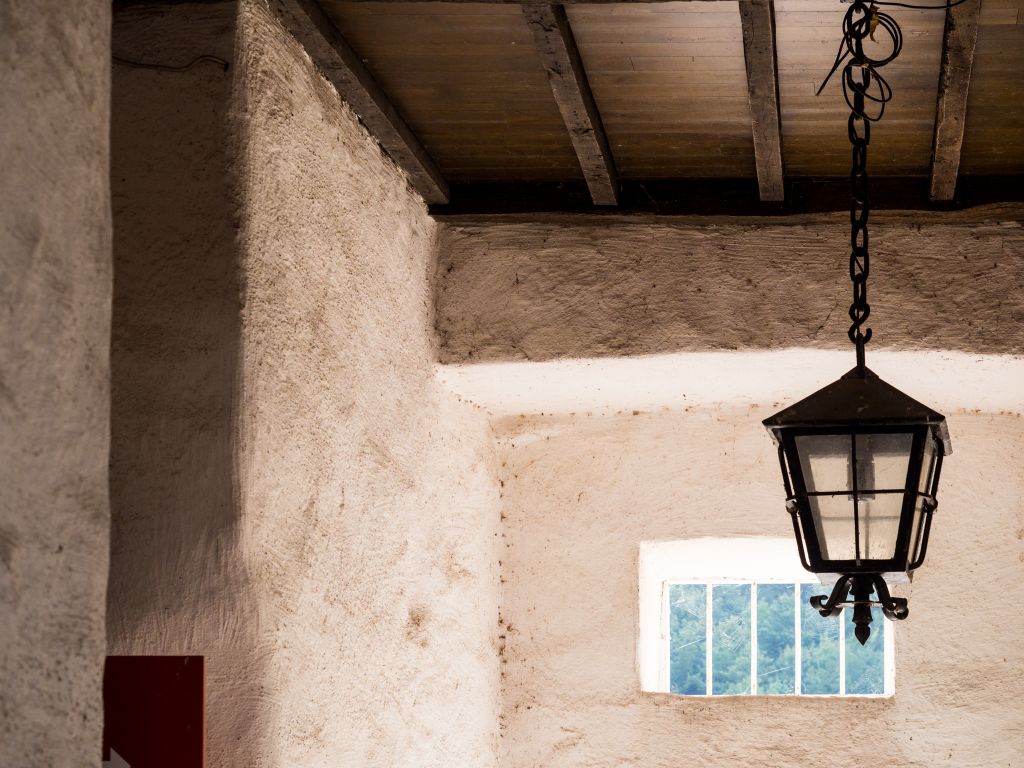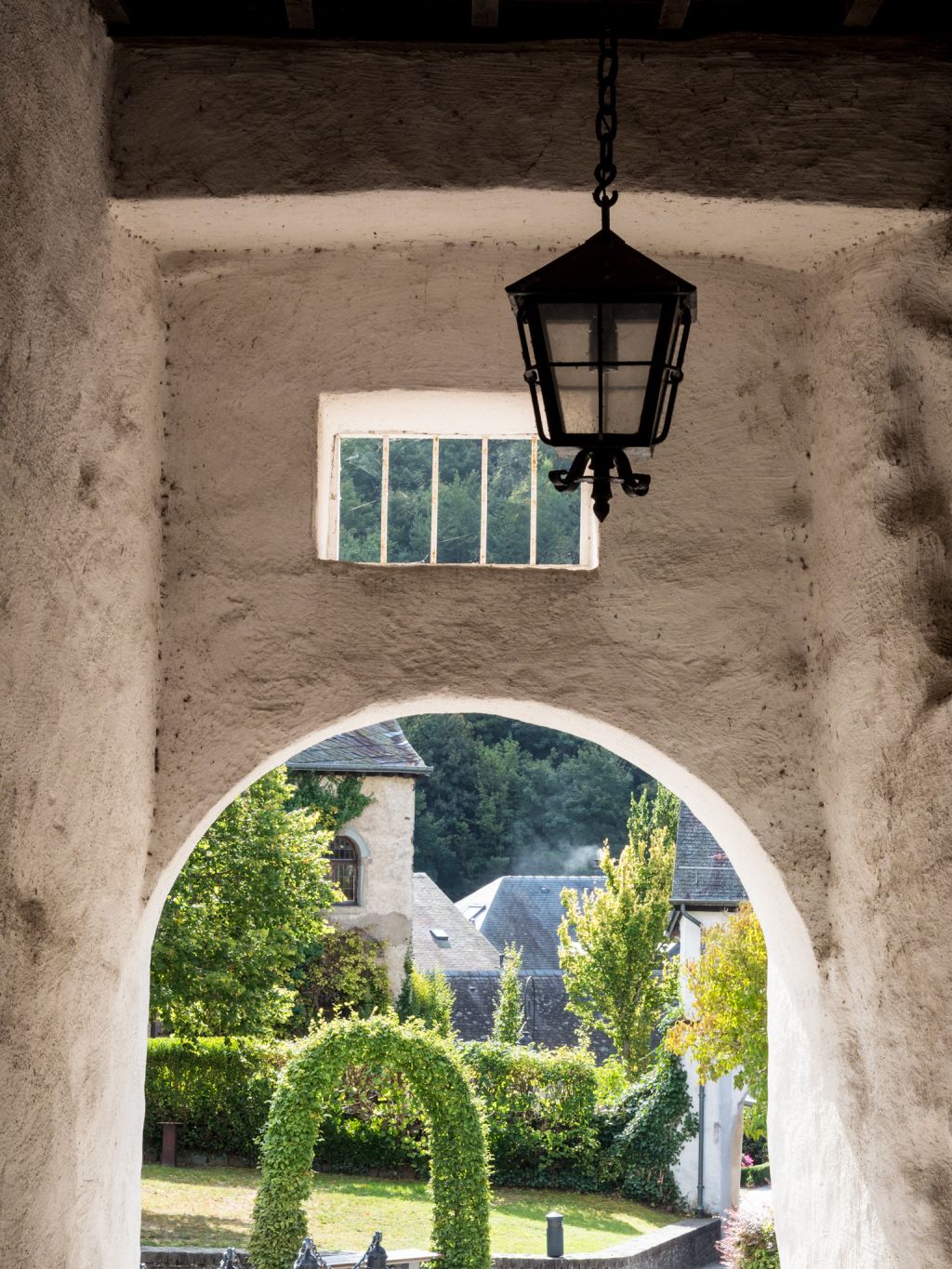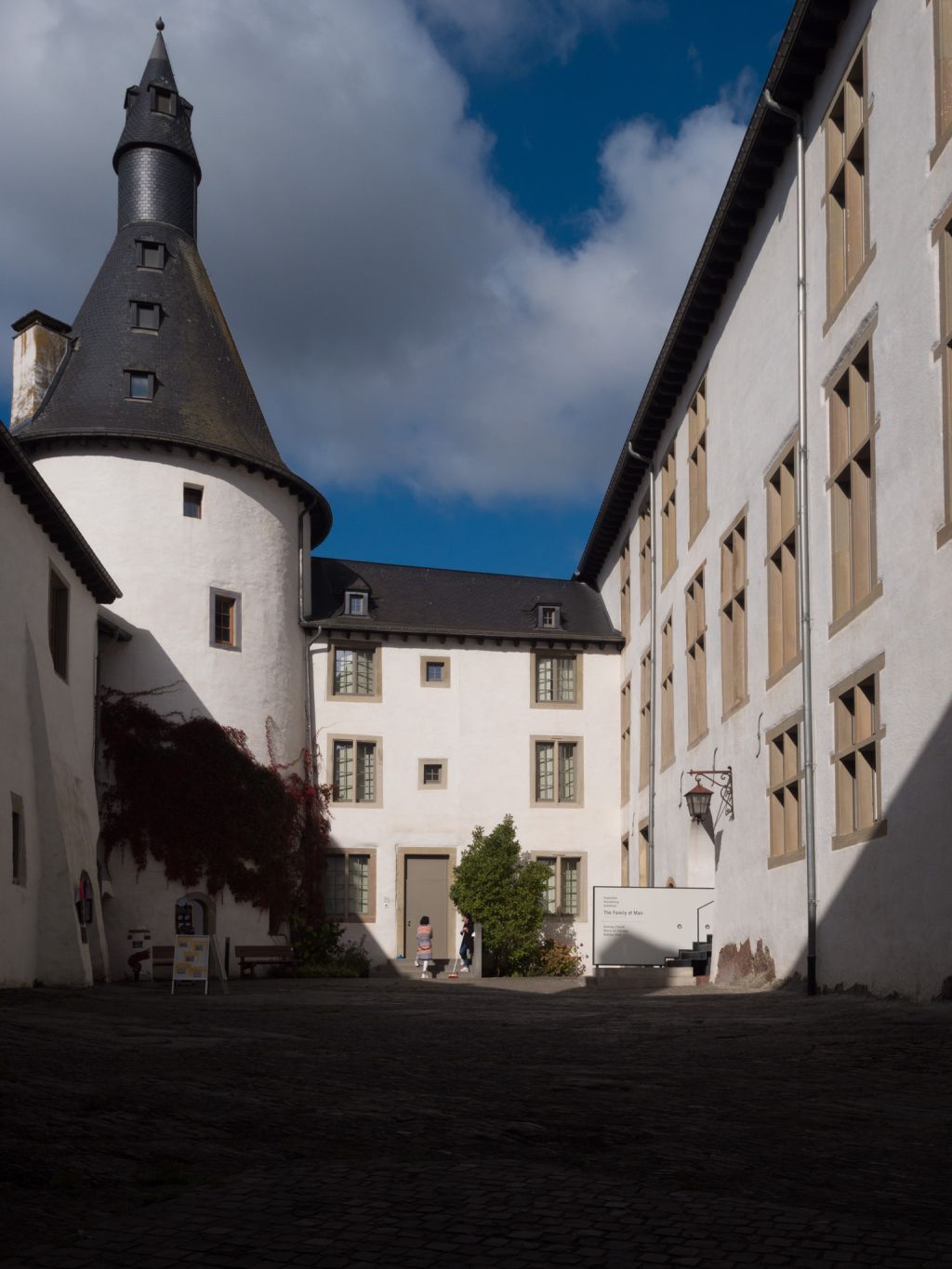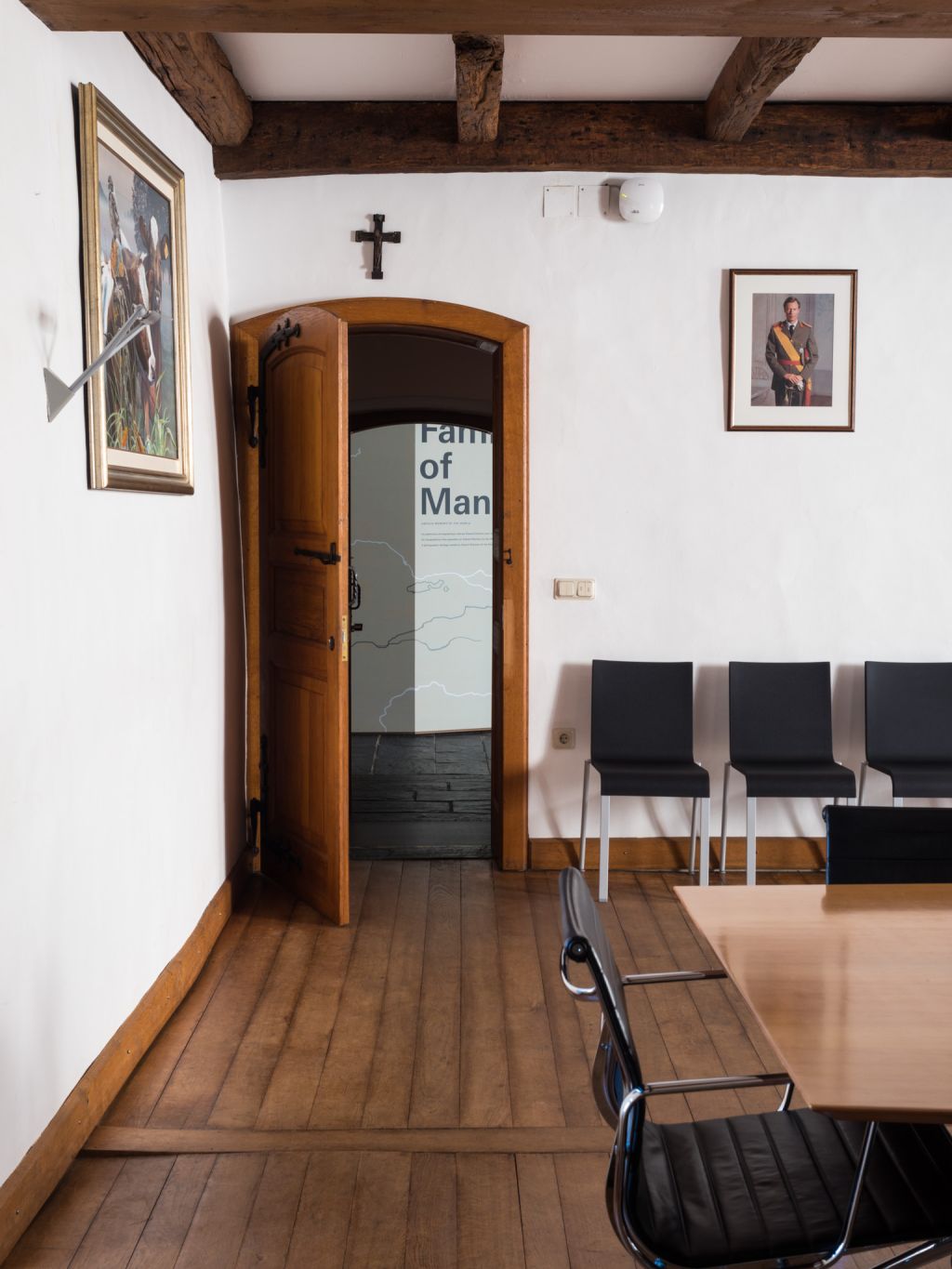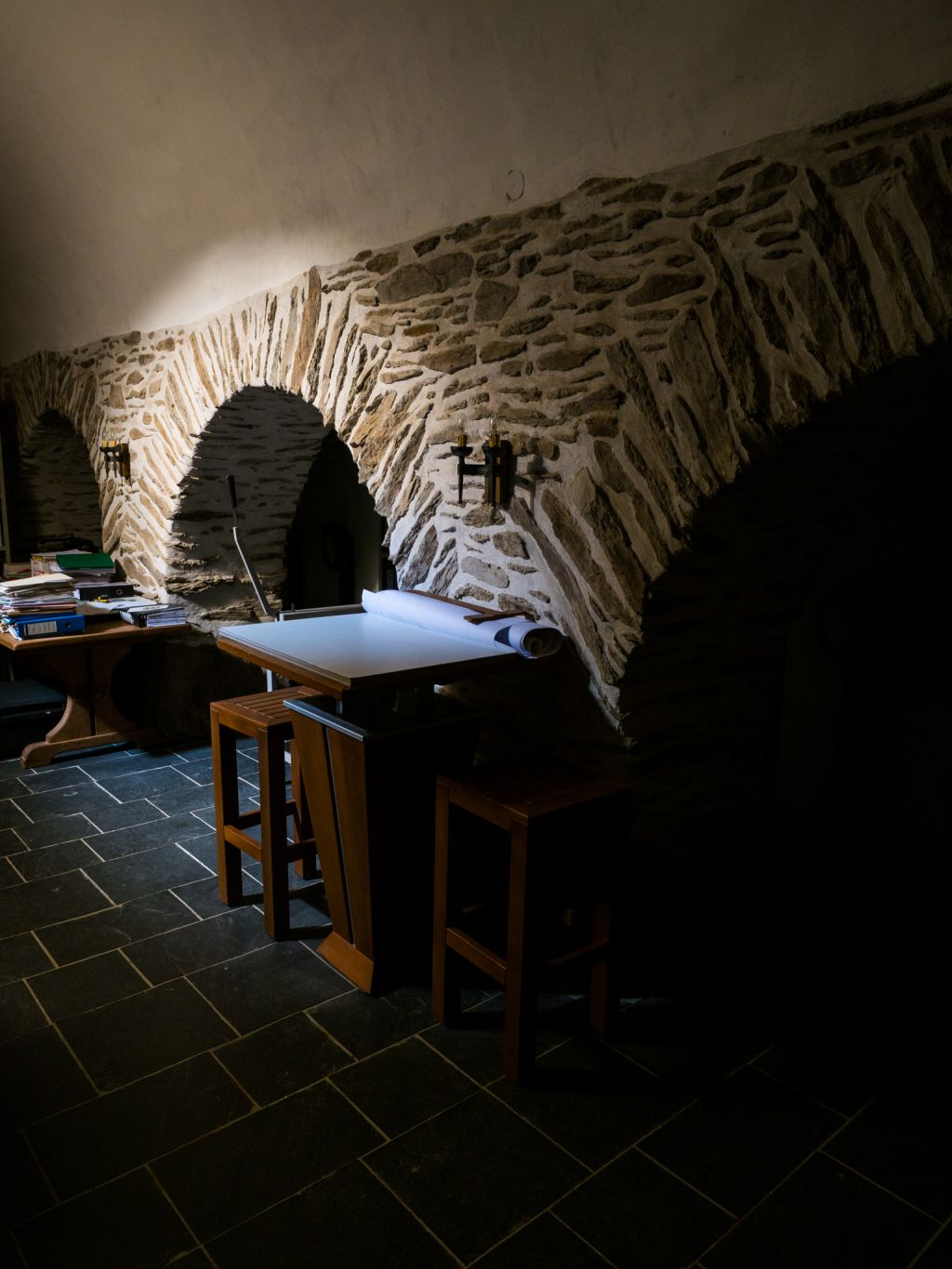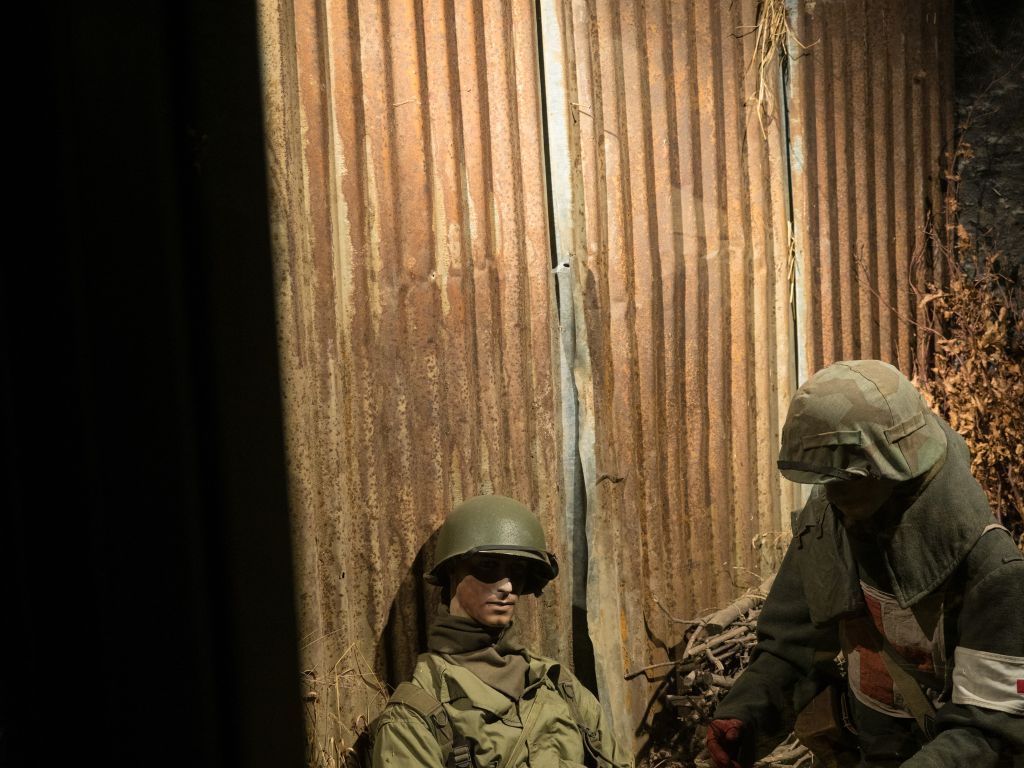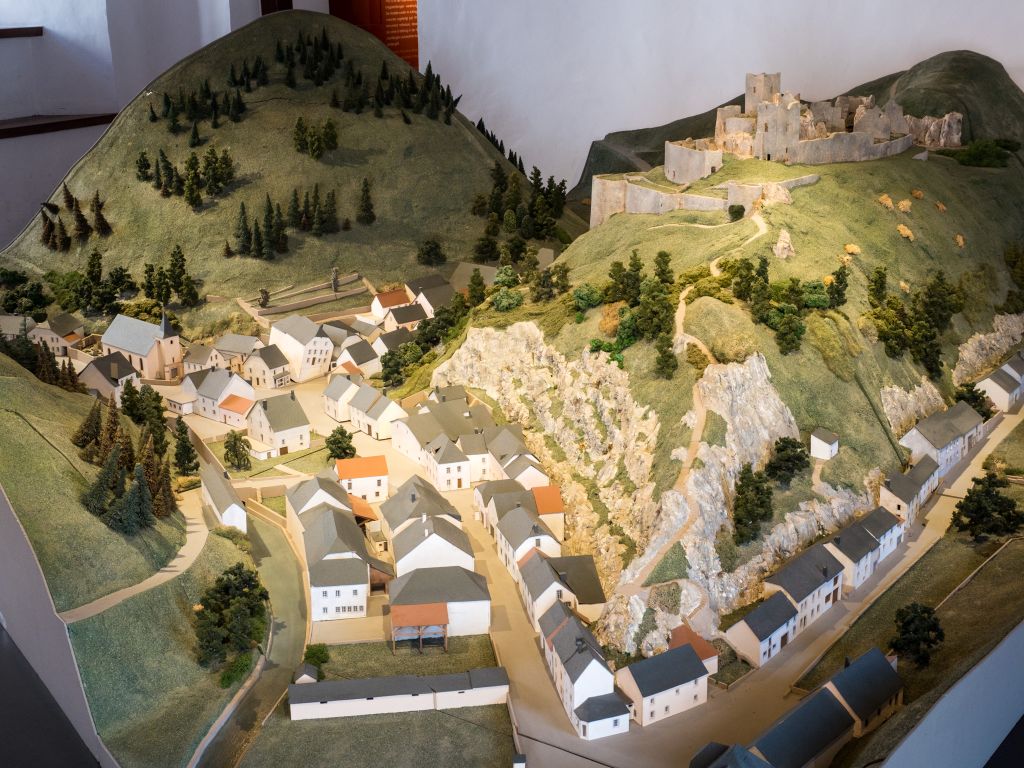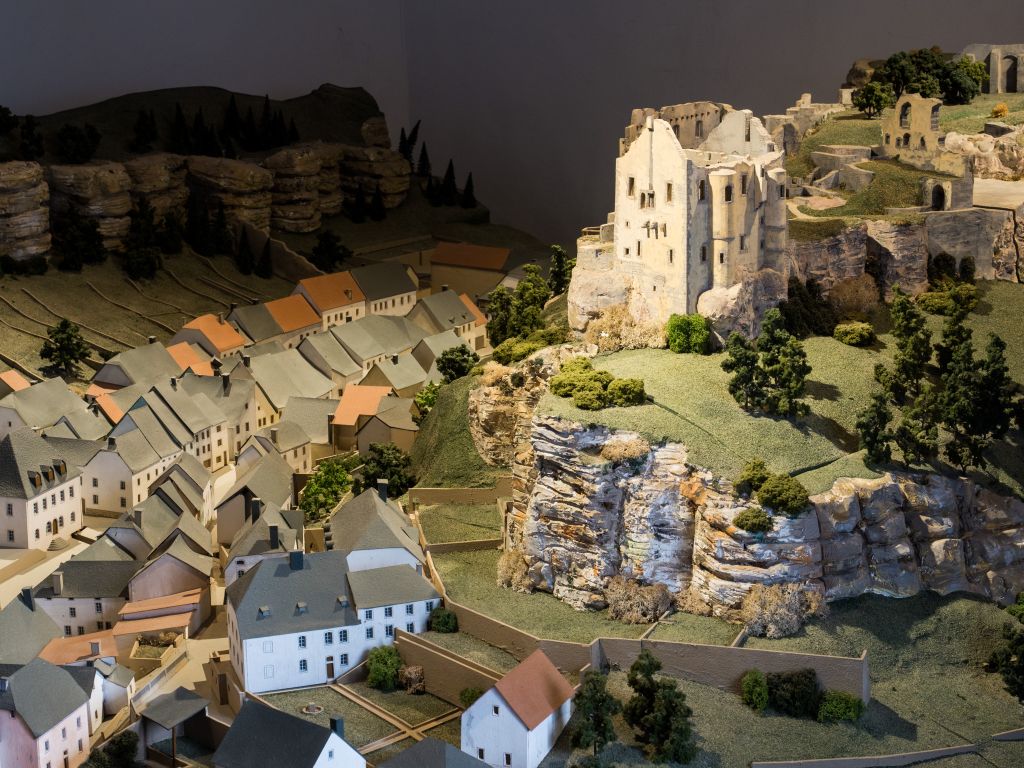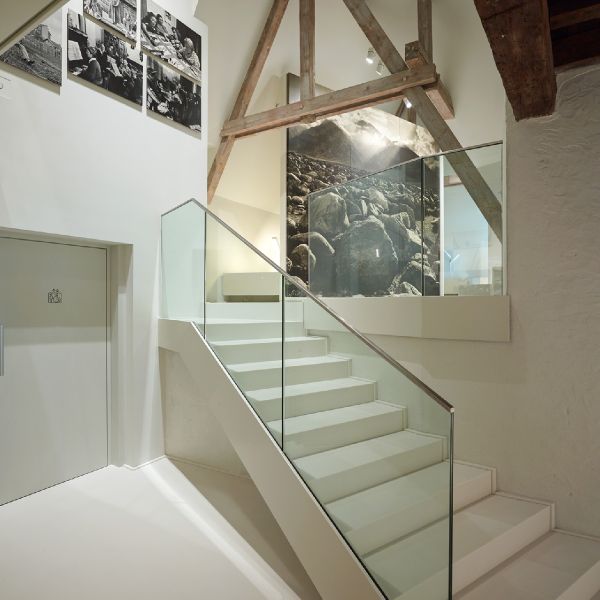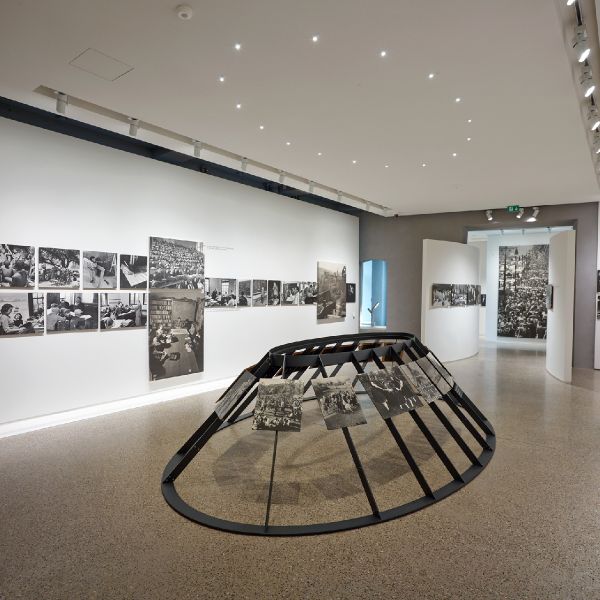Clervaux Castle
A
setting for culture and peace
It is amazing how a medieval castle, well restored, well maintained and well used, can contribute to the influence and identity of a town. This is the case of the castle of Clervaux.
The panoramic view from the heights of the N18, which winds its way into the heart of Clervaux, is enchanting: before us, at the bottom of the valley, in a loop of the river Clerve, unfolds a quiet town surrounding a white-clad castle. It is a romantic picture that will not leave any sensitive heart unmoved. The castle is intimately linked to the history of the town, it has accompanied and shaped it, alternating periods of glory and decadence, devastation and reconstruction. In recent decades, it has benefited from an exceptional enhancement, both in terms of restoration and in terms of its use and international prestige.
The castle of Clervaux is situated in a loop of the river Clerve, on a rocky spur called "Lay", and is surrounded by the houses of the horseshoe-shaped village.
The castle dates from the Middle Ages and was built in successive stages. The area it occupies today was established in the 15th and 16th centuries.
The oldest elements date back to the 12th century. This includes the west wing, which was built on the initiative of Count Gerard of Sponheim, brother of the Count of Vianden.
After the extinction of the Lords of Clervaux, the castle was considerably enlarged under the impetus of the Houses of Brandenbourg, Meysembourg and the Lannoy family. Thus, in order to protect the southern flank of the castle, at the beginning of the 15th century, Frederick I of Brandenbourg had the imposing Burgundy Tower built, which also housed the prison. A little later, larger living quarters and new cellars were built on the same southern flank. The Witches' Tower was also built in the first courtyard of the castle in order to strengthen the defence of the fortress.
A quarter of a century later, Albert Eugène de Lannoy added administrative buildings, stables and barns to the first courtyard, while removing a local church from the site.
In 1634, Claude de Lannoy replaced the dwellings and stables in the northern part with spacious reception rooms, including the Knights' Hall, which he designed in a Flemish-Spanish style.
In 1671, accommodation was built to house a caretaker. This building now houses the restaurant Le Château. In 1721, new stables were built to the left of the Witches' Tower. In 1887, Albert Eugène de Lannoy's work was demolished and the stones were used to build a new stately home in the park opposite for the Count of Berlaymont. For a long time this building was occupied by the Hôtel du Parc. Later, the castle fell further into disrepair before becoming private property in 1927 following an auction.
In 1944, during the Ardennes offensive (1944-1945), the castle was severely damaged after being bombed by German troops. The castle was reduced to a ruin and was bought by the Luxembourg state. The state then proceeded to restore the buildings to their former glory.
The castle has been given a new purpose
From the 1970s onwards, the castle was taken over by various institutions, each of which occupied a different part. In 1970, the model museum of Luxembourg castles was set up in the west wing. The model collection is managed by the municipal administration of Clervaux, which is responsible for the entire scenography as well as for the restoration and regular monitoring of the models. In 1972, the municipal administration moved to the ground floor of the east wing. In 1974, the Battle of the Bulge Museum was opened in another wing of the castle. In 1980, the museum was extended and in 1999-2000, it underwent a second transformation. The museum illustrates the course of the Battle of the Bulge during the winter of 1944-1945 with the help of documents, dioramas, military uniforms and authentic weapons.
The last rooms of the east wing - the first and second floors - have been home to the famous UNESCO Memory of the World photographic collection "The Family of Man" since 1994. From 2010 to 2013, the images in the exhibition were restored and the premises refurbished. In July 2013, the exhibition reopened to the public in a new scenography in the renovated spaces of the castle.
From the very first year, the exhibition was a great success with the public and became a real cultural and tourist magnet for the town.
A gift from State to State
Edward Steichen was born in 1879 in Bivange, Luxembourg. Two years later, his family emigrated to the United States, to Michigan. In 1900, Edward became a naturalized American citizen. He became one of the most influential photographers of the first half of the 20th century, and in 1947 he was appointed director of the photography department at MoMA, the Museum of Modern Art in New York. It was for this institution that he produced the two legendary exhibitions "The Family of Man" (1955) and "The Bitter Years" (1962). The Family of Man" collection was bequeathed to Luxembourg by the American government in 1964, at Steichen's request, as a tribute to his native country. In 1967, MoMA in turn donated the collection "The Bitter Years" to the Luxembourg government. This second collection is now on permanent display at the Château d'eau in Dudelange. The Family of Man" collection was partially displayed (not in its historical chronology) at the Château de Clervaux from 1975 until its first renovation in 1989. Re-installed in the castle in 1994, the exhibition was closed to the public again between September 2010 and July 2013 to allow for the renovation of the exhibition rooms and the restoration of the photographs. The transformation and upgrading to museum standards were orchestrated under the supervision of the “Service des
Sites et Monuments” (Sites and Monuments Department) and the “Centre National Audiovisuel” (National Audiovisual Centre) (CNA), in collaboration with the Public Buildings Administration. Great care was taken with the new spaces, as they must preserve images that are part of the world heritage of humanity. The exhibition reopened on July 5 In 2004, the non-profit organisation "Clervaux - cité de l'image" was created with the aim of reinforcing the theme of photography in the town's cultural offering. In addition to The Family of Man, which is open to the public all year round, the association offers open-air photographic installations, temporary exhibitions, photographic workshops and various activities related to image culture. The association regularly invites renowned photographic artists to come to Clervaux for a residency.
2013. The setting of the castle, the work on the scenography by the NJoy office, the dialogue between the images and the soft lighting, all these elements contribute to the success of the whole.
A call for peace through photography
The Family of Man collection consists of 503 photographs by 273 authors from 68 countries, collected by Edward Steichen for the Museum of Modern Art in New York (MoMA). After travelling around the world to more than 160 museums, the last complete version of the exhibition was installed in 1994 in the Château de Clervaux on a permanent basis. The exhibition was conceived by Edward Steichen as a collection of snapshots and emotions to convey a message of peace in the midst of the Cold War. Although it reflects the context in which it was created, the reactions of visitors to the exhibition still speak to the impact of these images today - some of which have become icons in the history of photography. Since its inception, The Family of Man has attracted more than ten million visitors and thus enters the history of photography as a legendary exhibition. Since 2003, it has been included in UNESCO's Memory of the World Register.
